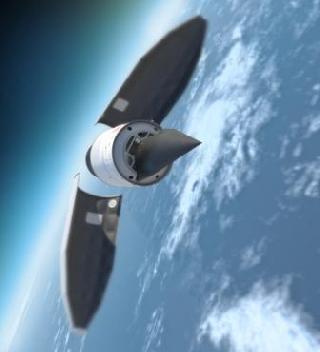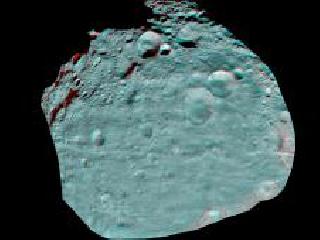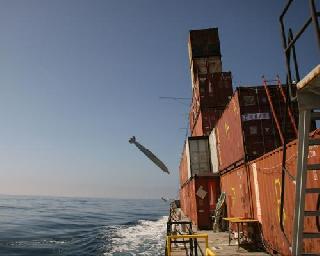
Falcon HTV2. A DARPA photo
WASHINGTON (BNS): US defence agency DARPA lost contact with Falcon HTV2 before the vehicle could fulfill all of its mission objectives during a test flight over the Pacific on Thursday.
The Minotaur IV rocket successfully inserted the aircraft into the desired trajectory. Separation of the vehicle was confirmed by rocket cam and the aircraft transitioned to Mach 20 aerodynamic flight, DARPA said.
According to DARPA, more than nine minutes of data was collected before an anomaly caused loss of signal. The agency launched the hypersonic plane from Vandenberg air force base in California.
The unmanned Falcon Hypersonic Technology Vehicle (HTV-2) can fly at 13,000 miles per hour and withstand temperatures in excess of 3,500 degrees Fahrenheit.
The US Defence Advance Research Projects Agency has assembled a team of experts to analyze the flight data collected during Thursday’s test flight.
According to Air Force Maj. Chris Schulz, DARPA HTV-2 program manager three technical challenges exist within the HTV-2 flight regime – aero thermal, guidance, navigation and control. And each phase of flight introduces unique obstacles within these areas.
HTV-2 first test-flight in April of 2010 ended in failure when it crashed into the ocean just nine minutes after takeoff.
DARPA Director Regina Dugan said, “In the April 2010 test, we obtained four times the amount of data previously available at these speeds. Today more than 20 air, land, sea and space data collection systems were operational. We’ll learn. We’ll try again. That’s what it takes.”
 Previous Article
Previous Article Next Article
Next Article













The Indian Air Force, in its flight trials evaluation report submitted before the Defence Ministry l..
view articleAn insight into the Medium Multi-Role Combat Aircraft competition...
view articleSky enthusiasts can now spot the International Space Station (ISS) commanded by Indian-American astr..
view article